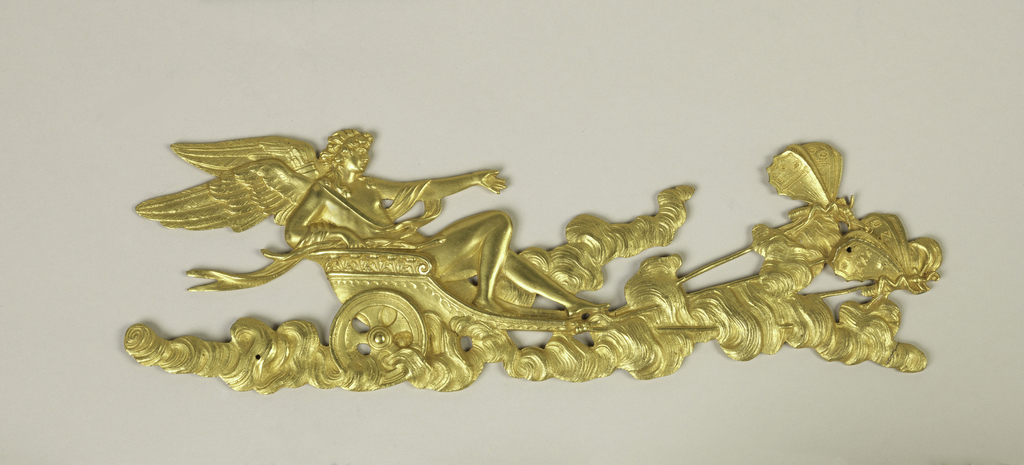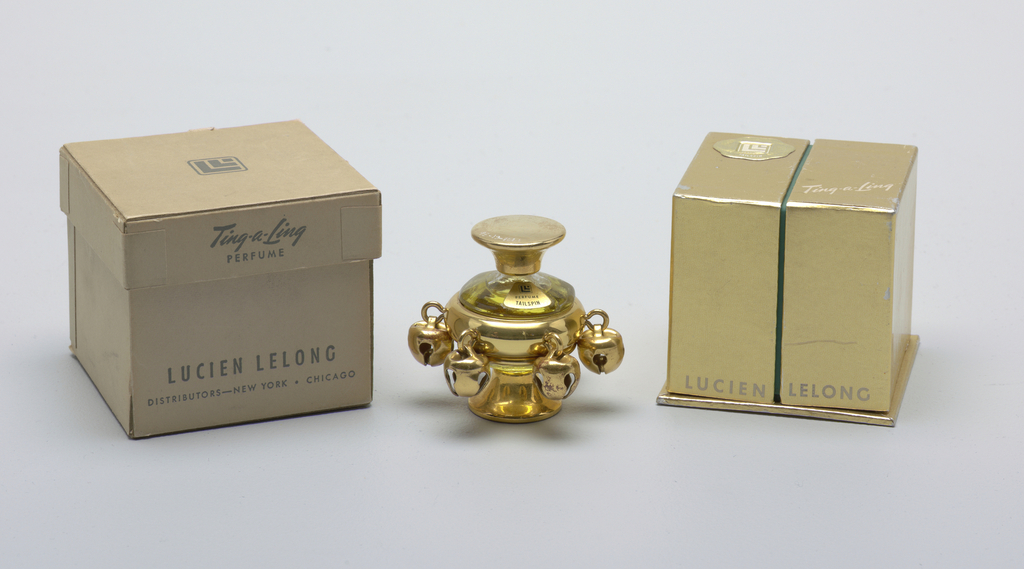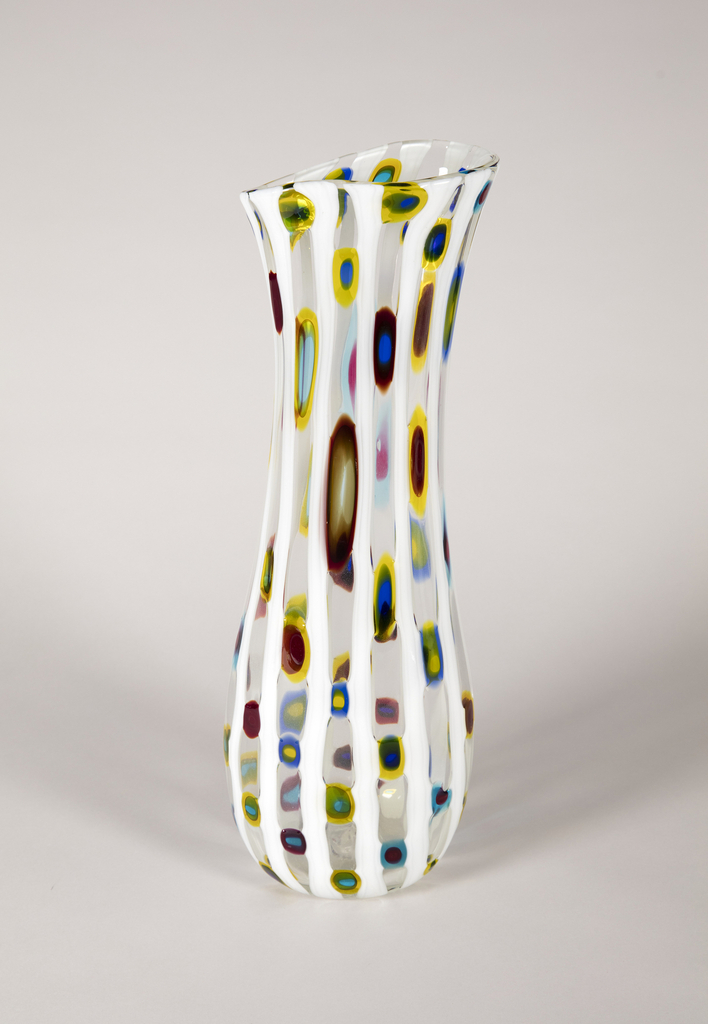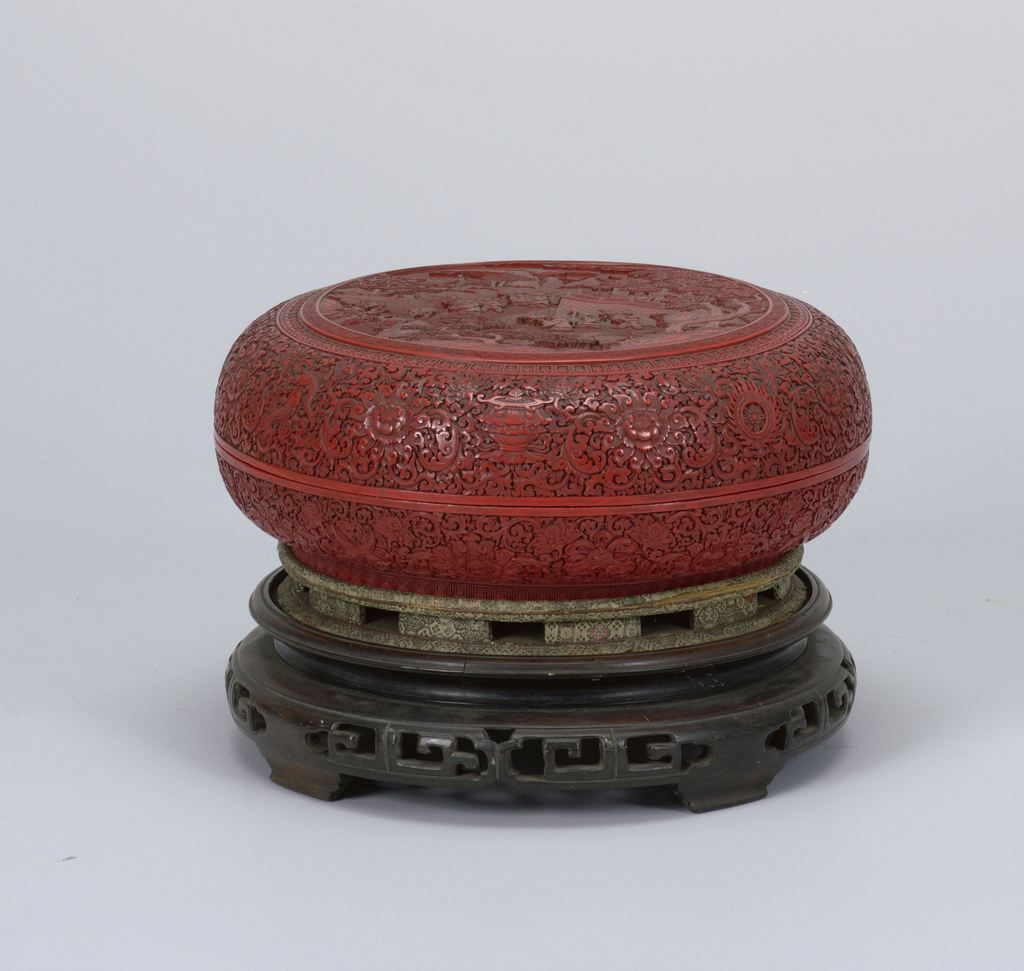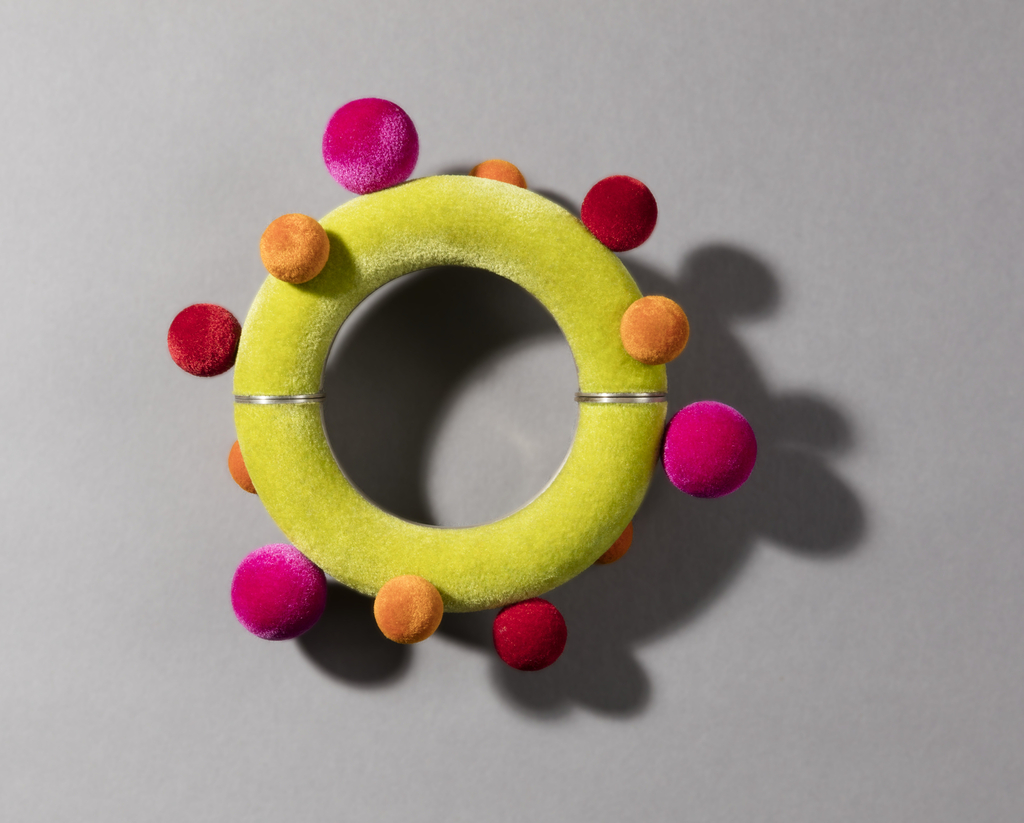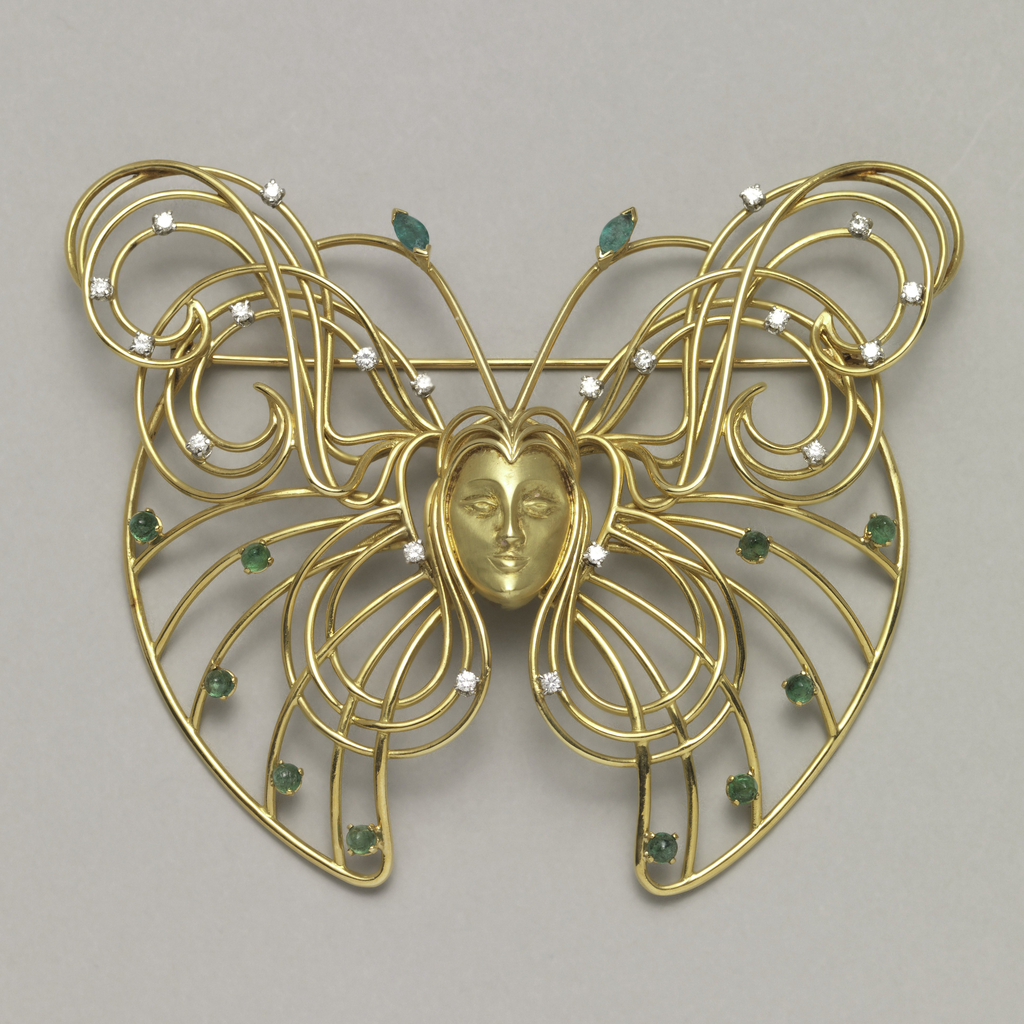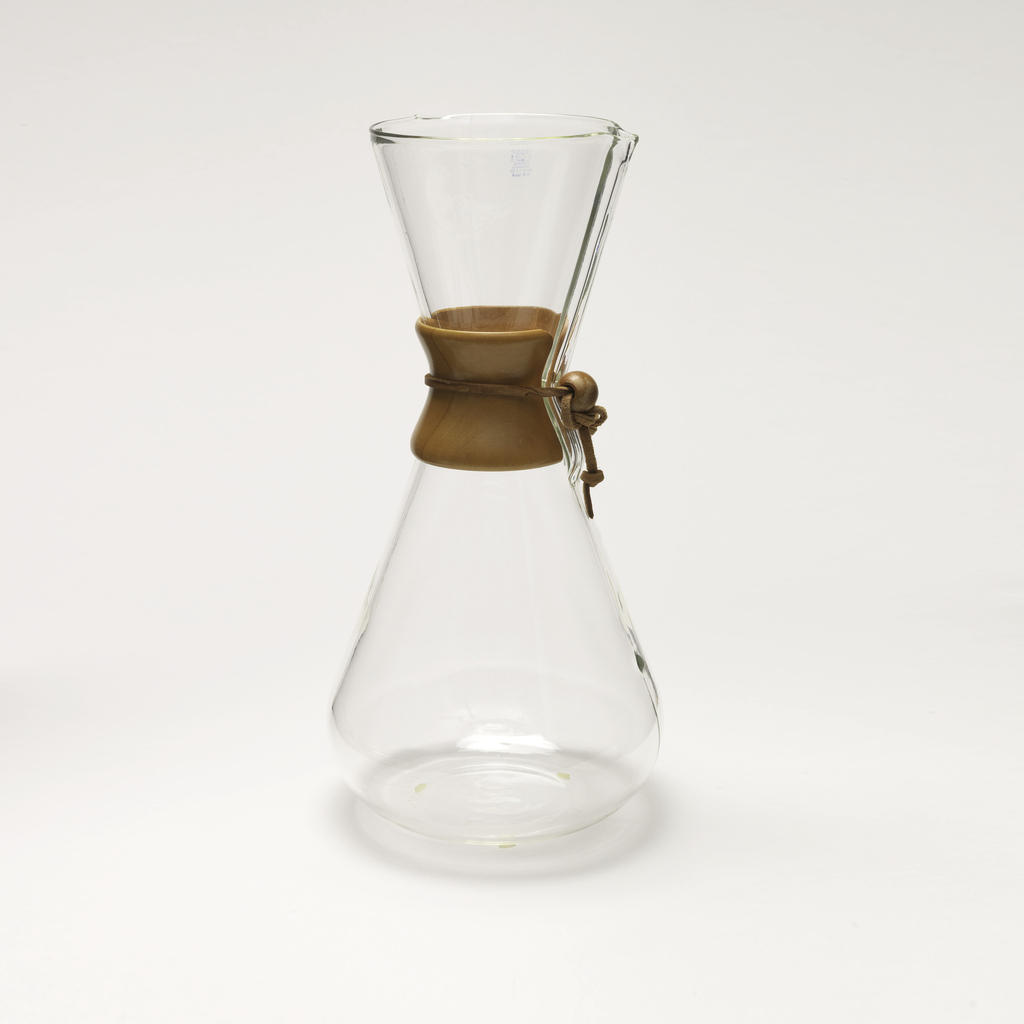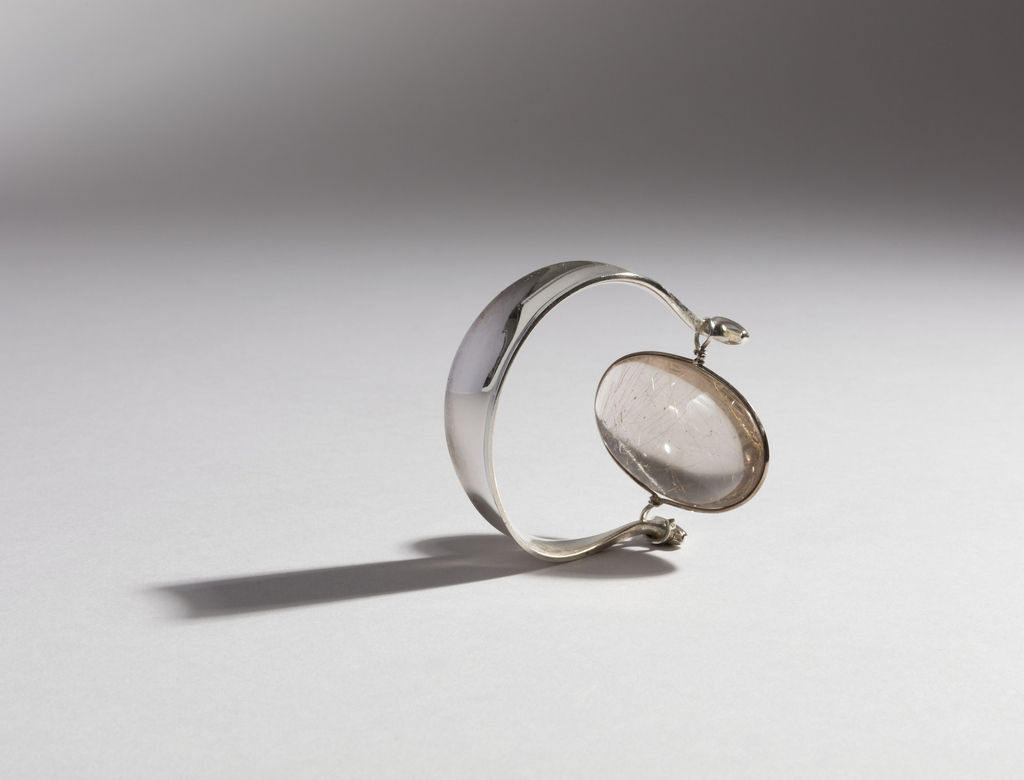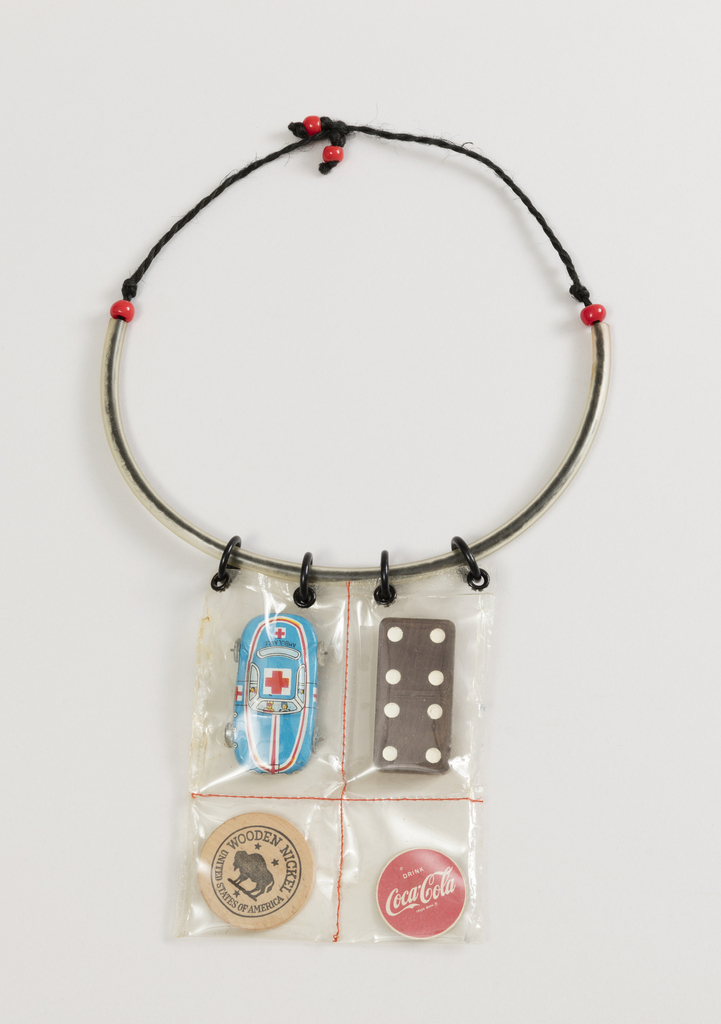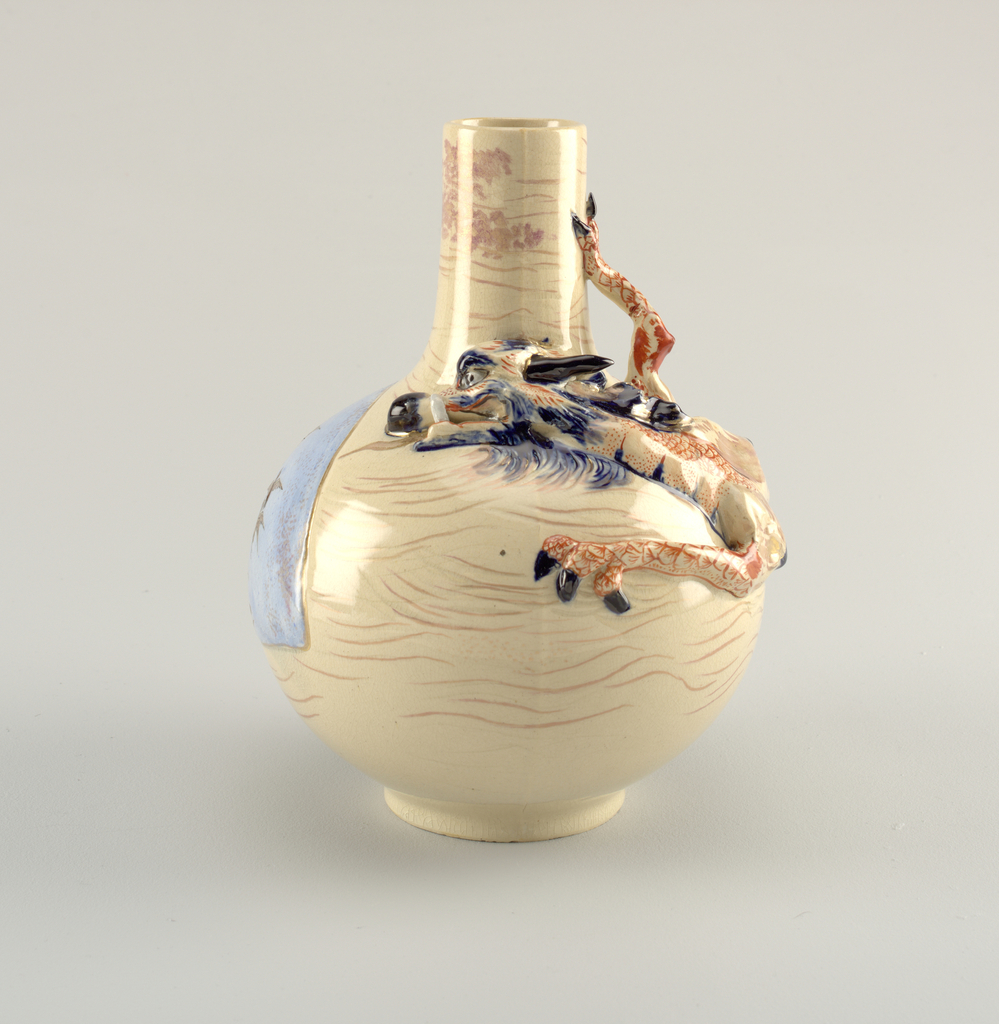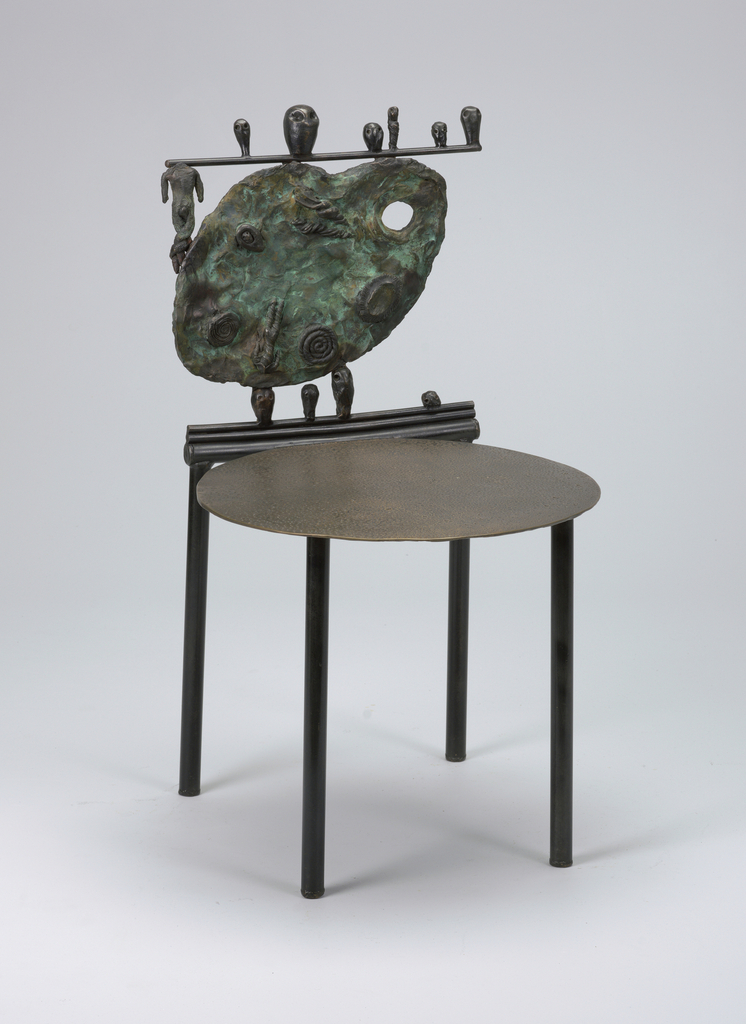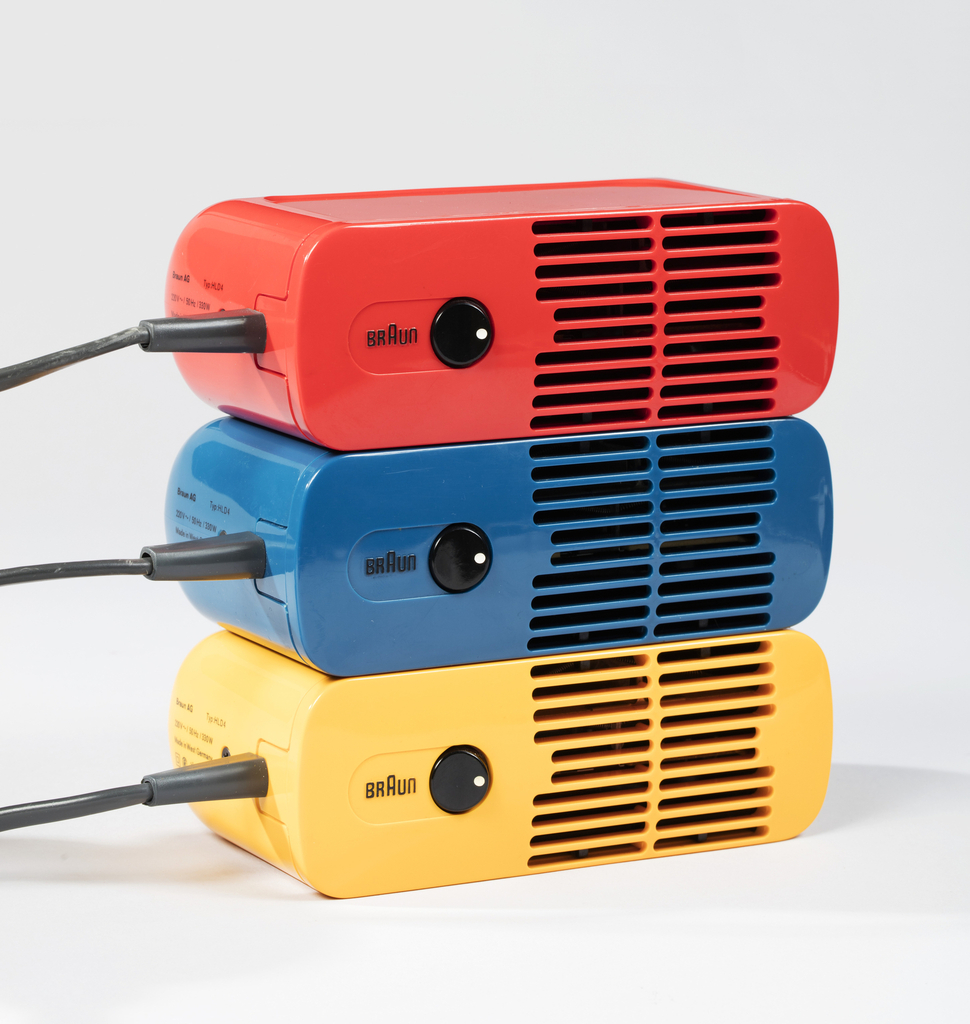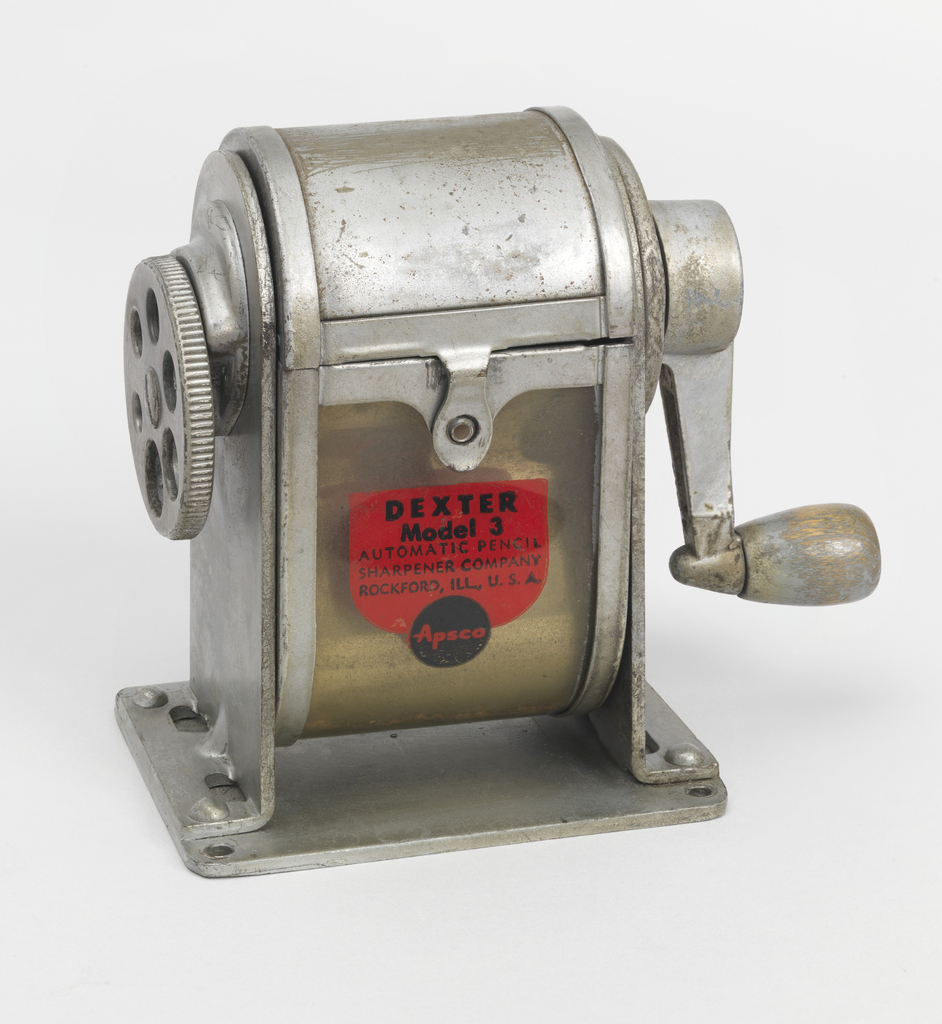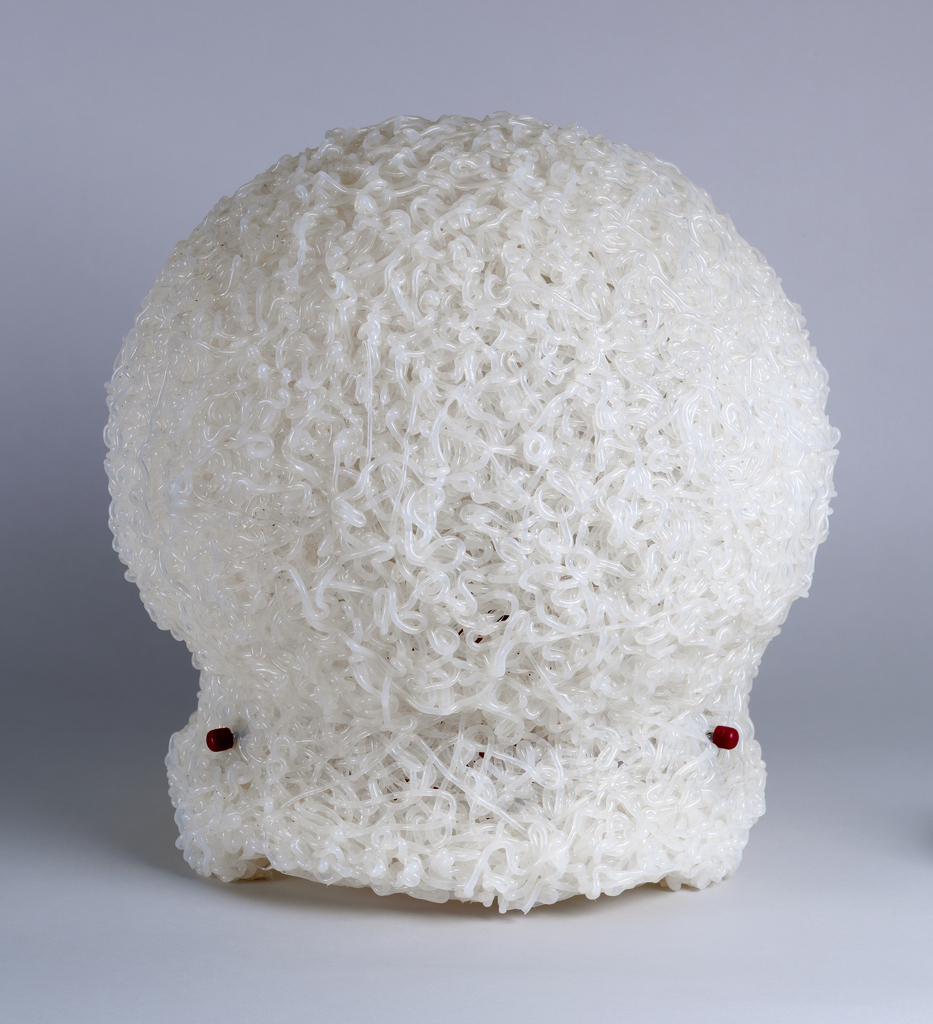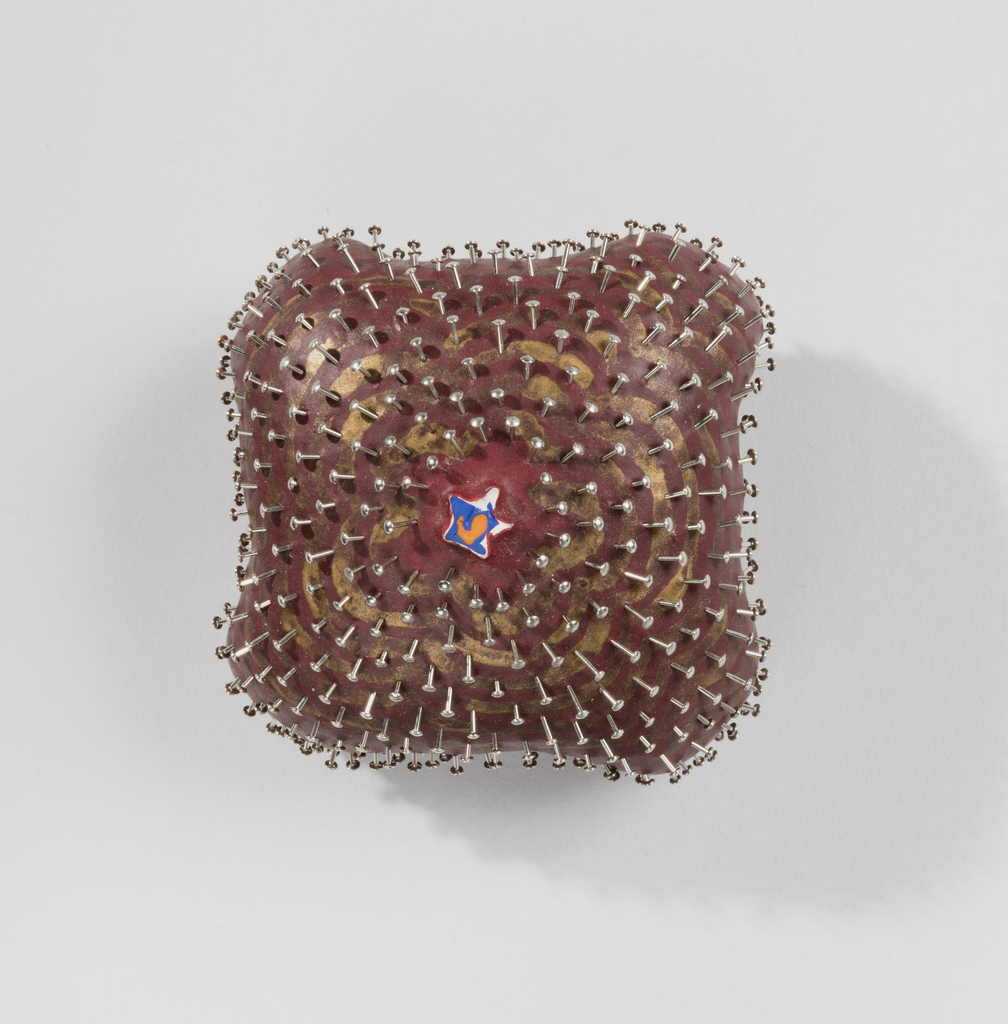This is a gilt bronze furniture mount made in France, in about 1800. Highly decorative mounts like this one were important elements in interior and furniture design from the late seventeenth to the early nineteenth centuries. They were created by master artisans trained in a strict guild system which applied exacting standards to the fabrication...
This festive little perfume bottle embodies the creative genius of French couturier Lucien Lelong, active between 1919, when he opened his first couture house, and 1948, the year he retired. Lelong was influential in shaping the world of haute couture throughout much of the twentieth century. Among his contemporaries were Chanel, Worth, Patou, Lanvin and...
To celebrate the opening of Saturated: The Allure and Science of Color (May 11, 2018-January 13, 2019), Object of the Day this month will feature colorful objects from the exhibition. This vase by Anzolo Fuga, was created using clear glass (cristallo) which was decorated with vertical rods of opaque white glass (lattimo) and multi-colored murrine. Murrine are colored...
To celebrate the opening of Saturated: The Allure and Science of Color (May 11, 2018-January 13, 2019), Object of the Day this month will feature colorful objects from the exhibition. This red lacquer box has a short circular foot and a precisely fitted circular lid. Together these elements combine to present a unified whole. The box rests...
In celebration of The Senses: Design Beyond Vision, this Object of the Day post takes a multisensory approach to an object in Cooper Hewitt’s permanent collection. This whimsical bracelet from Daniel Jocz’s Candy Wear series reminds us that one of the most important aspects of jewelry is the joy it brings to both the wearer...
This brooch, entitled Melusine, was designed by Marie-Claude Lalique and dates to about 1965. Made of thin gold wire, the brooch features the face of a woman whose hair swirls and coils into the wings of a butterfly. The piece is enhanced with a scattering of diamonds and emeralds. The date of 1965 may be...
This coffee maker was devised by chemist and inventor, Dr. Peter Schlumbohm, for the Chemex® Corporation. It is made of heat-resistant non-porous borosilicate glass, and surrounded by a wood collar tied with a leather thong, that serves as an insulated handle with which to pour the hot beverage. The ingenious use of glass allows the...
In celebration of Women’s History Month, March Object of the Day posts highlight women designers in the collection. This cuff-like bracelet with large oval stone clasp was designed by Vivianna Torun Bülow-Hübe in 1968. It is made of silver and rutilated smoky quartz. The bracelet’s simple form is emblematic of Torun’s philosophy that jewelry should...
In celebration of Women’s History Month, March Object of the Day posts highlight women designers in the collection. This necklace was made by Ramona Solberg in the early 1970s. It was in her private collection, and until her death she was its only owner. The pendant is a simple interpretation of reliquary jewelry which usually...
In celebration of Women’s History Month, March Object of the Day posts highlight women designers in the collection. This dragon vase was made at Frederick Dallas’s Hamilton Road Pottery by Maria Longworth Nichols. Nichols worked there before founding her own firm, Rookwood Pottery, later in 1880. This example is marked with a number “3” on...
In celebration of Women’s History Month, March Object of the Day posts highlight women designers in the collection. The Oka chair, by Michele Oka Doner, is both a utilitarian furnishing and a highly detailed sculptural piece. The chair’s seat is a flat textured disk which rests on straight, unadorned legs. The back, where all the...
These HLD 4 No. 4414 hair dryers announce a new design idiom for the hair dryer with their rounded rectangular shape and bold colors. On the hair dryer’s front face there is a bisected slotted grill. Two central rows of slits correspond to the placement of a black rocker switch, which is easily operated with...
Feeling nostalgic at the beginning of the New Year, well just the sight of this pencil sharpener will bring back memories of school days past, that curiosity and slight fear you felt the first time you put your pencil through the opening into the sharpener. What about the first time you emptied one and found...
As I write this blog entry it is cold, and growing colder outside, and this lamp, which looks like it is covered with snow, caught my eye. On first sight it appears to be a snow globe, with the snow on the outside. This globular lamp, however, was designed in 1999 by noted Italian architect...
This “pin” brooch, made in 1992 by jeweler Beppe Kessler, was part of a larger collection of “pin” brooches, each piece one of a kind. The series itself was derived from an installation by Kessler, also in 1992, which involved hanging large rounded, pin cushions on a wall. The brooches are an outgrowth of this...
